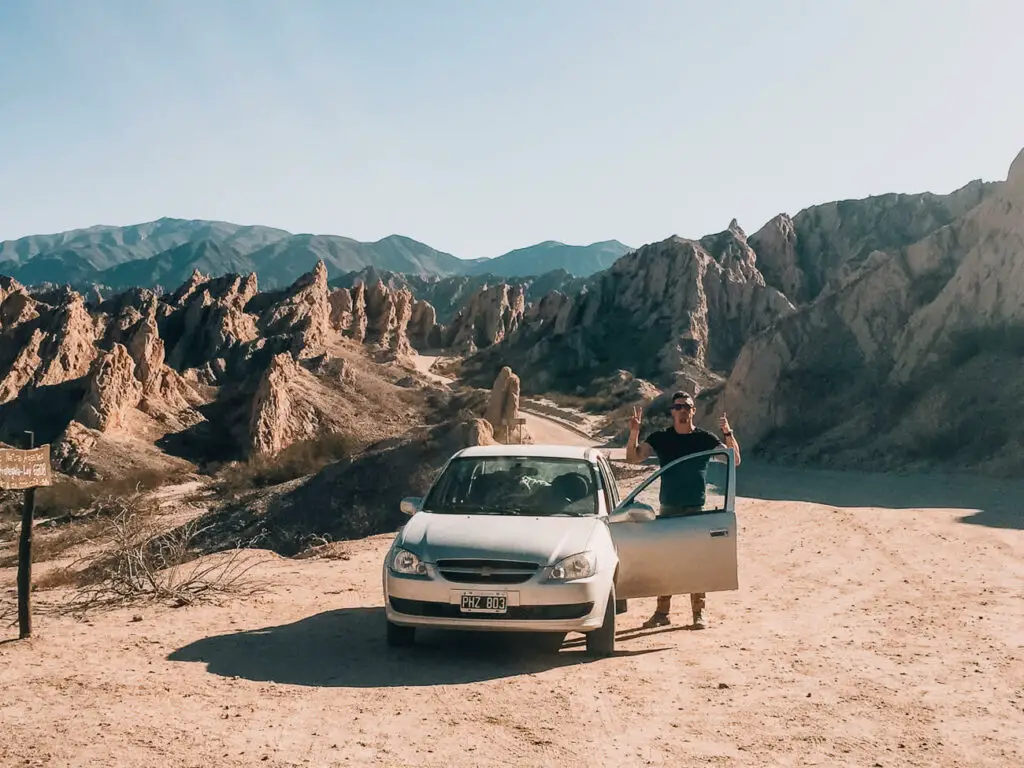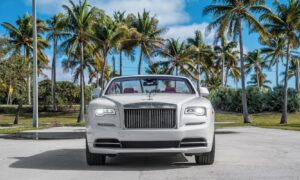Renting a car can transform your travel experience, allowing you to explore Argentina at your own pace.
In this guide, we’ll discuss car hire in Argentina in depth, including its benefits, practical insights, and valuable tips to enhance your journey.
Let’s start with benefits;
Freedom to Explore Off-the-Beaten Paths
One of the most compelling reasons to rent a car in Argentina is the unparalleled freedom it provides. With a rental car, you’re not tied to public transport schedules or limited to organized tour routes.
You can venture off the beaten path to discover hidden gems like the Quebrada de Humahuaca in Jujuy or the verdant landscapes of the Yungas region.
Argentina is a vast country. From Mendoza’s lush wine regions to Patagonia’s rugged landscapes, there’s a lot to see. Having a rental car allows you to cover more ground efficiently. You can plan multi-stop days and visit several attractions without the constraints of bus or train schedules.
Cost-Effective and Flexible Travel
Contrary to what many might think, renting a car in Argentina can be cost-effective, especially if traveling with a group or a family.
Sharing the cost of a rental and fuel can be cheaper than purchasing multiple tickets for long-distance buses or flights, especially considering the convenience and time saved.
Renting a car offers the flexibility to tailor your trip to your preferences. Whether you’re interested in exploring the local gastronomy, keen on hiking trails, or just want to soak up scenic views, you can design your itinerary to suit your interests without reliance on available tours or transport options.
Navigating with Ease and Comfort
While Argentina’s main cities are well connected by public transport, many of its natural attractions are spread out and can be difficult to access otherwise. A rental car comes with the ease of setting your schedule. You can start your day early to avoid crowds or stay late to catch a sunset, providing comfort and convenience that enhances your travel experience.
Traveling by rental car gives you control over your environment. This is particularly reassuring when health concerns might make public transport less appealing. You can manage hygiene and social distancing standards in your personal vehicle, ensuring a safer journey for you and your companions.
The Eclectic Routes of Argentina
Argentina’s routes are as diverse as its landscapes. Driving can be a joy here, with roads like the famous Route 40 offering a journey along the Andes’ spine or the picturesque Route 68 through Salta’s vineyards.
Each drive introduces you to different aspects of Argentine culture and nature, from small towns to panoramic vistas.
Having personnel convincing facilitates spontaneous interactions with locals, enhancing your cultural experience. Whether stopping at a roadside stall for homemade empanadas or joining a local festival, these authentic moments often become the highlights of a trip.
Is it Necessary to Hire a Car to Explore Argentina?
The necessity of renting a car largely depends on the nature of your travel plans, your priorities, and the flexibility you desire.
Geography and Destinations
Argentina is the world’s eighth-largest country, meaning its attractions are spread out across large distances. Key destinations like Buenos Aires, Mendoza, Salta, and Patagonia are far apart. While public transportation such as buses and planes connect these significant points, the schedules might not always align with your travel plans, and remote areas may be inaccessible.
Cost Implications
Renting a car can be cost-effective for group travel but expensive for solo travelers when considering rental fees, insurance, fuel costs, and parking. In contrast, Argentina’s long-distance buses are known for their comfort and affordability, and domestic flights can sometimes be found at competitive prices.
Driving Conditions
Driving in Argentina presents challenges such as varying road conditions, understanding local driving laws, and occasionally challenging weather conditions in regions like Patagonia. Driving can be stressful for those unfamiliar with such conditions and detract from the overall travel experience.
Urban vs. Rural Exploration
In major cities like Buenos Aires, Cordoba, or Rosario, having a car can be more of a hassle than a benefit. These cities offer robust public transport systems, and driving can be challenging due to traffic and limited parking. However, in rural areas or for intercity travel, a car becomes an invaluable asset for exploring at your own pace.
Ultimately, the decision should align with your travel style, budget, and comfort with driving in new environments.
Renting a Car at El Plumerillo Airport vs. Downtown Mendoza
Both Mendoza El Plumerillo International Airport and downtown Mendoza offer car rental options, but each has its own advantages. Let’s compare these options to help you make the best choice for your travel needs.
Convenience and Accessibility
Airport: Renting a car at El Plumerillo International Airport is convenient, especially if you arrive by plane. You can step off your flight, collect your baggage, and head straight to the car rental counters within the airport. This means you can begin your adventure almost immediately, without additional transportation to get to your rental car.
Downtown: Picking up a car in downtown Mendoza requires more logistics. You’ll need to get from the airport to the city center, about 10 kilometers away. You can take a taxi, bus, or a shuttle service offered by the rental agency. This adds a bit of travel time and potentially some cost, but it’s not overly complicated.
Selection and Availability
Airport: The variety of rental cars at the airport is generally better. Major rental agencies have a broader selection of vehicles to accommodate the influx of travelers. You’ll likely find a car that fits your preferences and budget immediately.
Downtown: While the selection downtown might be more limited, some travelers find that agencies in the city center offer lower rates than those at the airport. This is often due to lower operational costs and fewer airport surcharges, which can translate into savings for you.
Cost Considerations
Airport: Typically, renting at the airport includes additional fees and surcharges. These can cover everything from airport taxes to premium location fees, making the overall cost higher than renting downtown.
Downtown: As mentioned, the potential for lower prices is a significant draw for picking up your rental car in downtown Mendoza. This could be a financially smarter choice if you want to save money and don’t mind the extra steps required to get there.
Hours of Operation
Airport: Car rental agencies at the airport often have longer hours, aligning closely with flight schedules. This is ideal if you’re arriving late at night or leaving early in the morning, as you can be assured that the rental counter will be open.
Downtown: The hours of operation for downtown locations can be more restrictive. If your flight arrives late or you plan to start your day early, you might find downtown rental agencies closed, which could delay your plans.
Ease of Departure
Airport: Beginning your journey from the airport allows you to bypass city traffic initially, heading straight onto the main roads or highways. This can be particularly beneficial if your itinerary includes destinations outside Mendoza city.
Downtown: Picking up your car in the city might mean navigating through city traffic as soon as you get your vehicle. While this isn’t a huge issue, it could be daunting for those unfamiliar with driving in Argentina.
Best Car Rental Locations in Argentina
Argentina’s most popular car rental locations cater to travelers looking to explore the country’s diverse landscapes and vibrant cities. Based on search data, the top cities for car rentals include:
Buenos Aires: As the capital and largest city, Buenos Aires accounts for approximately 44% of total car rental searches in Argentina. With numerous rental agencies available, it’s a convenient starting point for many travelers.
Mendoza: Known for its wine country, Mendoza is the second most popular location, making up 18% of searches. Renting a car here allows visitors to access vineyards and stunning mountain views easily.
Renting a car at El Plumerillo Airport in Mendoza is another excellent choice for travelers. The convenience of picking up your rental car directly at the airport means you can start your adventure immediately after landing.
Salta: This northern city, famous for its dramatic landscapes and rich culture, represents about 13% of car rental searches. A rental vehicle is ideal for exploring the scenic routes and nearby attractions.
Other notable locations include Cordoba, Bariloche, and El Calafate, offering various car rental options to enhance your travel experience throughout Argentina.
Cost Overview of Car Rentals in Argentina
For standard vehicles, renting a car in Argentina typically costs $350 to $550 per week. The exact price depends on various factors, including the type of car you choose and the time of year you plan to visit. For instance:
- Economy Cars are often the most affordable option, costing around $53 to $70 per day. If you rent for a week, expect to pay approximately $322 to $454.
- SUVs and Larger Vehicles: If you’re looking for more space or planning to venture into rugged terrains, larger cars, and 4×4 vehicles can cost upwards of $700 per week.
- Luxury Cars: For those wanting a premium experience, luxury rentals can start at about $162 per day, significantly increasing your overall budget.
Suppose you plan a week-long trip from Buenos Aires to Mendoza, stopping in picturesque towns like San Luis and San Juan. Renting an economy car for this journey would cost around $400 per week, plus additional expenses like fuel and insurance.
Additional Costs to Consider
Mileage Limits: Most rental companies in Argentina offer unlimited mileage options, which is beneficial if you cover long distances. However, some budget rentals might impose mileage caps, so checking the terms before booking is essential.
Insurance and Additional Driver Fees: Insurance is another critical aspect of car renting. Your rental rate may include basic coverage, but consider additional coverage for peace of mind. Expect to pay around $15-$30 daily for comprehensive insurance.
If you’re traveling with friends or family and plan on sharing driving duties, adding a driver can incur extra fees, typically ranging from $10 to $15 per day.
Fuel Costs: As of early 2025, gasoline prices in Argentina average about $4.39 per gallon. Fuel costs can add up quickly depending on your itinerary and driving habits. For instance, if you plan to drive approximately 400 miles during your trip with an average fuel efficiency of 25 miles per gallon, you might spend around $70 on fuel alone.
Tolls and Parking Fees: Driving in urban areas like Buenos Aires may also involve tolls and parking fees. Tolls can vary significantly based on the routes taken; budgeting an extra $20-$50 for tolls is advisable. Parking fees in city centers can range from $5 to $15 per hour, so consider this when planning your stops.
Tips for Renting a Car in Argentina
- Prices can fluctuate based on demand, especially during peak tourist seasons (December through February). Booking in advance often secures better rates.
- Consider your travel plans carefully. If you’re sticking to urban areas, an economy car may suffice; however, if you’re venturing into the countryside or mountainous regions, an SUV or 4×4 is advisable.
- Before driving off, thoroughly inspect your rental car for any pre-existing damage and ensure it’s documented by the rental company to avoid disputes later.
- Familiarize yourself with Argentine traffic laws and road signs. For example, speed limits are generally lower than in many other countries—typically around 37 mph (60 km/h) in urban areas and 68 mph (110 km/h) on highways.
- While many rental cars come equipped with GPS systems, a smartphone navigation app can provide real-time traffic updates and alternative routes.
Frequently Asked Questions
Is it a good idea to rent a car in Argentina?
Renting a car in Argentina can be a great idea, especially if you plan to explore remote areas or travel along scenic routes like Ruta Nacional 40. This vast country offers diverse landscapes, from mountains to beaches, and having your own vehicle provides flexibility and freedom to create your itinerary.
However, public transport is efficient and often more economical in urban centers like Buenos Aires. If your trip involves city exploration, consider using taxis or rideshare services instead. Ultimately, renting a car is ideal for adventurous travelers looking to discover Argentina’s hidden gems beyond the cities.
Is renting a car in Argentina expensive?
Renting a car in Argentina can be relatively expensive compared to other countries. Standard vehicles typically have weekly rental rates of $350 to $550, while larger cars and 4x4s can exceed $700 per week. Daily rates for economy cars usually fall between $35 and $80. Additional costs may include insurance and fuel expenses.
What is required to rent a car in Argentina?
You’ll need a valid driver’s license from your home country to rent a car in Argentina. While an International Driving Permit (IDP) is not mandatory, it can be beneficial for communicating with local authorities and rental agencies.
Most rental companies require drivers to be at least 21 years old, with some imposing additional fees for those under 25.
A credit card in the driver’s name is usually needed for the security deposit, and it’s advisable to carry your passport for identification purposes. Always check specific rental policies, as they may vary by company.
Do I need an international driving permit to hire a car in Argentina?
While you don’t necessarily need an International Driving Permit (IDP) to rent a car in Argentina, having one can simplify the process. Your valid driver’s license must be in the Latin alphabet; otherwise, an IDP is recommended.
The IDP is a translation of your license, whichd can help avoid misunderstandings with rental agencies or law enforcement. Additionally, carrying an IDP can offer peace of mind while driving in unfamiliar areas, making communication easier if you encounter any issues on the road.
Conclusion
Renting a car in Argentina offers a sense of adventure and flexibility unmatched by other modes of travel. It allows you to explore extensively, tailor your journey to your tastes, and immerse yourself in the local culture.
However, if you plan to focus on urban centers or travel solo and avoid the complexities of driving in a foreign country, relying on Argentina’s extensive network of buses and flights might be more suitable.
Visit Finalrentals.com to get the latest car rental deals in Argentina.




































